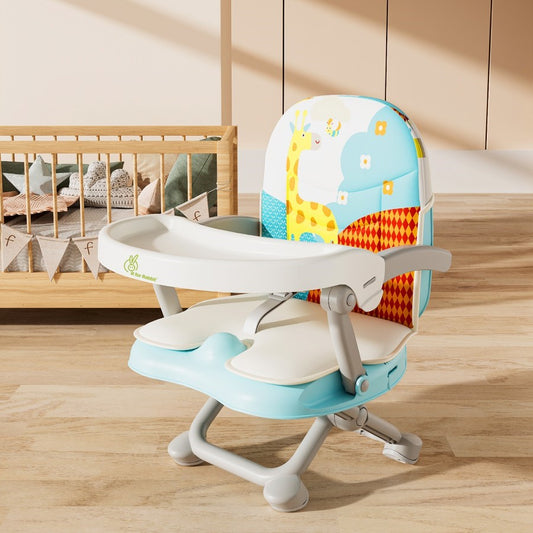Online and Free Child Growth Percentile Calculator - Baby Growth Charts
Result
Weight for age: percentile
Your child's percentile is , which means that Weight is larger than percent children of the same age and less than the other percent children of the same age.
Length for age: percentile
Your child's percentile is , which means that Length is larger than percent children of the same age and less than the other percent children of the same age.
Head circumference for age: percentile
Your child's percentile is , which means that Head circumference is larger than percent children of the same age and less than the other percent children of the same age.
What Exactly is the Growth Percentile?
Growth percentiles are evaluations of a kid in comparison with other kids. The percentiles are typically showcased as curved lines on the growth charts.
Here is an approach to comprehend growth percentile:
Suppose your child is in the 40th percentile for weight. Then it suggests that around 40 percent of same age children weigh either the same or less than your child. The rest of the 60 percent weigh more than your child.
This means that the higher the percentile number, the better is the baby when matched with other babies of that same age. If your kid is in the 50th percentile, it means half the kids of her age weigh more than that number and the other half weigh lesser than it.
Infant Growth Chart Percentile Calculator with Downloadable and Printable Results
Growth charts assist in matching the kid’s height, weight, and head circumference with other kids of a same age group. They support you, and the healthcare providers keep a measure of your kid’s overall growth and development. They even signal if your kid has growth issues due to any health conditions.
Boys and girls have distinct growth charts as they have dissimilar growth and development patterns. In many scenarios, boys are somewhat heftier and taller than girls.
Also, there are distinct growth charts for children with illnesses like Down syndrome and Turner Syndrome as they develop at a diverse speed, matched to kids without these variances.
Although each kid is different and has his or her own development pattern, most strong and healthy babies follow a similar maturity pattern. This does not mean that they are of the same stature and weight. However, they put on weight in quantity to their overall size and specific gender.
The growth charts were built by collecting insights from the height, weight, and head-size capacities of children. The curves on the newborn growth chart calculator showcase how many children weigh a firm amount at a firm age.
What do growth charts suggest?
Growth charts obtained through an infant growth chart calculator are precisely developed and designed to monitor a baby's growth using 3 key factors:
• Weight
• Height
• Head circumference
Your child’s doctor will take notice of these precise factors. Over time, these dimensions will showcase if the kid’s growth pattern is at par with the benchmarked growth rate. If it is equal to the benchmarked rate, it is a positive sign that your baby is well.
The graph displays the percentile your baby falls in, and how she fares in assessment to other children of her age.
What are the different types of charts?
• Weight-by-age Chart
Weight-by-age chart matches your baby’s weight with other children of a similar age. The percentile suggests to you what percentage of kids weigh less than your kid.
• Height-by-age Chart
Height-by-age chart matches your kid’s height with other kids of the similar or the same age. The percentile suggests to you what percentage of kids are shorter than your kid.
For example, out of 100 children, a worth of 40 percent suggests your kid is taller than more than 40 percent kids and shorter than the other 60 percent.
• Head Circumference-by-age Chart
Head circumference-by-age chart matches your kid’s head circumference based on age. The percentile suggests to you what percentage of kids have a head smaller than your kid’s head.
How to use a newborn weight percentile calculator for babies with premature growth?
Preterm growth charts are accessible to be leveraged explicitly for premature babies. Such growth charts aim to copy growth patterns that occur while term pregnancy.
The Fenton preterm growth chart, utilized by many healthcare professionals, is based on the overall birth size of newborns with established gestational ages. It is popular and used in nations like Germany, Italy, the USA, Austria, Canada, and Scotland.
The charts start at 22 weeks, end at 50 weeks, and may be in concurrence with term charts after 40 weeks of pregnancy period. They are gender-driven, take the weight, length, and head augmentations in weekly augmentations into account, and comprise percentiles (3rd, 10th, 50th, 90th, and 97th).
Are there any drawbacks to using a baby percentile calculator?
Baby growth percentile calculators are generally based on growth charts and curves from global bodies like WHO. The insights comprise kids of all nations, races, and ethnicities and match them against a benchmark.
Though this makes the match simple, such charts are probable to over-diagnose underweight and inhibiting in many normal kids in developing nations.
On the other hand, they may define overweight kids as healthy, as in current times, overweightness is on the upsurge. To overcome this issue, new growth charts possess BMI (body mass index) calculators too to support the outcomes.
Can a baby percentile calculator forecast how tall my kid will be as an adult?
No, a baby percentile calculator cannot precisely foresee a kid’s adult height. This is because the calculators match a kid’s growth patterns to other babies of a similar age and same gender. However, genetic factors inducing a kid’s adult height are not measured.
What if my kid’s growth curve fails to follow these charts?
Your baby’s growth curve can showcase provisional ups and downs that are normal and should not be distressing. Ups may be due to developments spurt and downs can happen due to sickness.
However, if these happen for longer time periods, then your kid’s doctor will cross-check the kid. In case your baby is breastfeeding, then the doctor will check if she is latching on properly. If your baby is big enough and consuming solid foods, the medical provider may ask about her stool for a check.
The doctor will keep a close eye on variances in percentiles. As an illustration, if your kid is in the 25th percentile for weight parameters and 75th percentile for height parameters, you would be suggested to feed your kid more so he or she puts on average weight.
And, if growth is inert or falling for a momentous time period, he might suggest some medical tests to diagnose the cause of development failures.
Consequently, if you have a concern regarding the baby’s progress curve, it is best to see a medical professional for quick advice.
What can I do to get my child on a superior percentile curve?
The prime objective of leveraging a growth chart to monitor baby’s measurements is not to put her on a high percentile curve. It is to make sure that whatever percentile your child is in, she develops along that explicit curve.
If the curve has dropped, your kid’s doctor will suggest approaches to get your baby back to her normal percentile. Unless any health illness or concern is impacting the baby’s development, all the percentiles are measured regularly.
If the baby is premature, your medical professional will advise a diverse growth chart to monitor the baby’s development. This is accustomed as per her age (intended from due date) but not chronological age (intended from the precise birth date).
Premature and low birth weight children may initiate on a lower percentile curve. However, they generally catch up with their peers by the age of 3 years.
Disclaimer: Whereas the growth percentile calculator suggests you what development percentile your baby falls in, it is better that you consult a healthcare professional prior to making any alterations in the child's diet or exercise patterns. You must remember that a percentile value is not the same as real growth worth. However, it is a comparison of your kid’s development with other kids of that age. So, a doctor would assist you best in comprehending if there are any growth holdups in your kid and methods of revising them.













